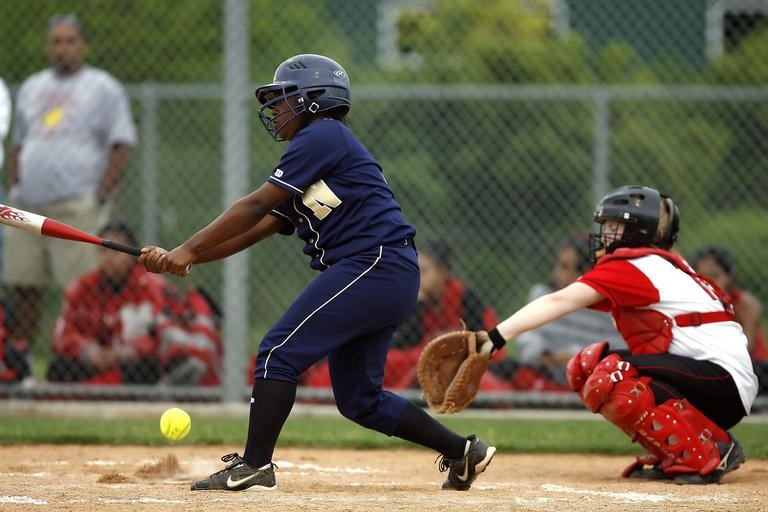
Everyone saw how blatantly unfair it was for the women’s basketball teams in the NCAA tournament to have one tiny stack of weights and a couple of yoga mats whereas men’s basketball teams had an entire weight room complex. The uproar was quick and effective as the NCAA apologized, dashed to equalize the weight rooms, and enlightened companies like Dick’s Sporting Goods trucked loads of equipment to Texas for the female players to use. Yet, the obvious and inexcusable inequity faced by the college women’s basketball teams tipping off in Texas are just the tip of a national unfairness iceberg of blatant gender inequity faced by girls and young women across the country—a crisis we can easily fix.
As a long-time nonprofit Title IX lawyer over the last decade, and female athlete myself who couldn’t have played college volleyball without Title IX’s protections—countless times I have walked into high schools in various states, and across California, to see weight rooms stocked to the brim with equipment suited for boys’ football, basketball, and baseball, with little to no consideration of the girls’ teams wanting to work out in the same space or the unique needs of their teams and athletes. Often the majority of weight room users are males, with no effort to ensure it is welcome and accommodating to female athletes who deserve to condition just as much as the male athletes. Similarly, the training rooms are serving the boys and their teams ahead of girls and their teams. And the list goes on with schools affording inferior or non-existent team and locker rooms for girls, sub-par game and practice spaces, and second-rate equipment and supplies such as thread-bare uniforms for varsity girls’ softball with varsity boys’ baseball having five sets of uniforms in mint condition.
These same issues are everywhere, in low, middle and high-income areas, racially diverse areas, less diverse areas, red states and blue states-with girls of color in low-income areas getting the least sports exposure. Everywhere girls are getting less than boys in education-based, federally funded public schools, in violation of Title IX and against what is simply fundamentally right—fairness. Plus boys are being afforded a million more opportunities to play sports at the high school level over girls, even though girls want to play in far greater numbers. Just in California, there are 100,000 more high school sports slots going to boys over girls.
The inequity stakes are high. Girls that play high school sports make 7% higher wages as adults, compared to their non-athlete peers, and experience a wide range of educational and health dividends if they play sports. Denying the girls the chance to play, or a fair shot when they do play, hurts girls, sets terrible examples in learning environments, and breeds society-wide gender inequity.
The good news—fixing these issues, like in the NCAA women’s and men’s tournament bubble inequity, is not complicated and could virtually happen overnight.
First, school and community sports leaders such as athletic directors, principals, coaches, and superintendents must examine the entire athletic program and highlight any inequity. One doesn’t need legal expertise to see what’s uneven for girls versus boys—anyone can spot the issues. Especially as California’s youth sports re-open, we must assess whether and how the re-introduction supports girls as much as boys.
Second, make creative low- to no-cost adjustments such as rotating existing facilities, trading off purchasing of new equipment and supplies for girls’ and boys’ teams, and simply gender-balancing rallies, announcements, fundraising opportunities and more. Even if there are limited resources, we wouldn’t give the only school computers to male students over females. We should not be doing this with extra-curricular school sports.
Third, ask girls and young women what they need to see equity and audit the overall program, using focus groups and simple surveys. Schools must take responsibility with assessments to even things, plus get girls’ input on what’s keeping them from playing or forcing them out of play. Recently, girls’ field hockey parents across the L.A. area voiced their concerns that their daughters wouldn’t get a compressed season whereas boys’ football would. Thankfully, state and local leadership recognized the explicit gender inequity in such a call and restored the girls’ field hockey season.
Finally, persist. Girls, coaches, parents, school administrators, and athletic associations can ask for and make the necessary, simple changes, but they must keep at it.
Before a school lands on Twitter or TikTok with a video about how unfairly girls are being treated because they don’t have weight room access or a proper season, play offense against inequity instead of defense. Women’s history month is the perfect time to start, but make ensure change is happening all year long. Let’s end this needless March Madness gender inequity, at all levels, once and for all.
Kim Turner, Esq. is the director of the Fair Play for Girls in Sports project of nonprofit Legal Aid at Work, in San Francisco, California, representing low-income girls of color across the U.S. in advocating for gender equity in youth sports.